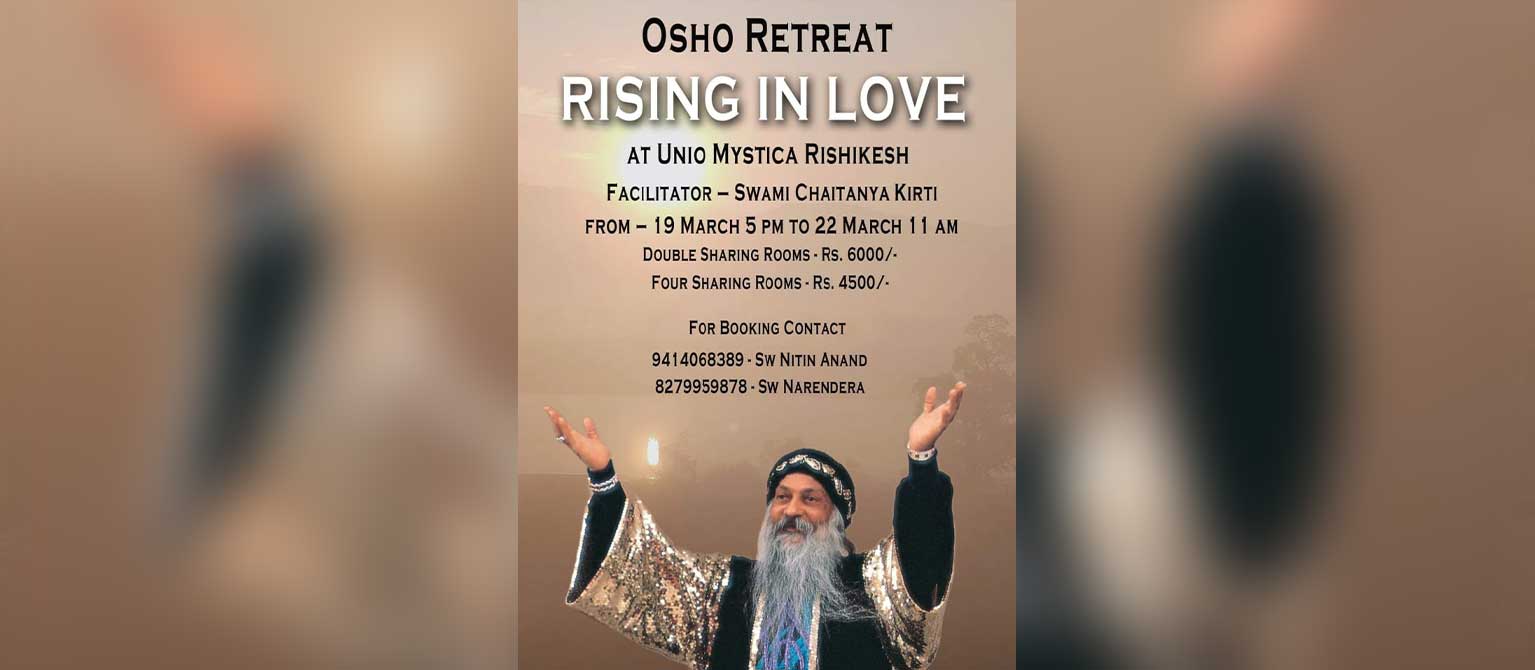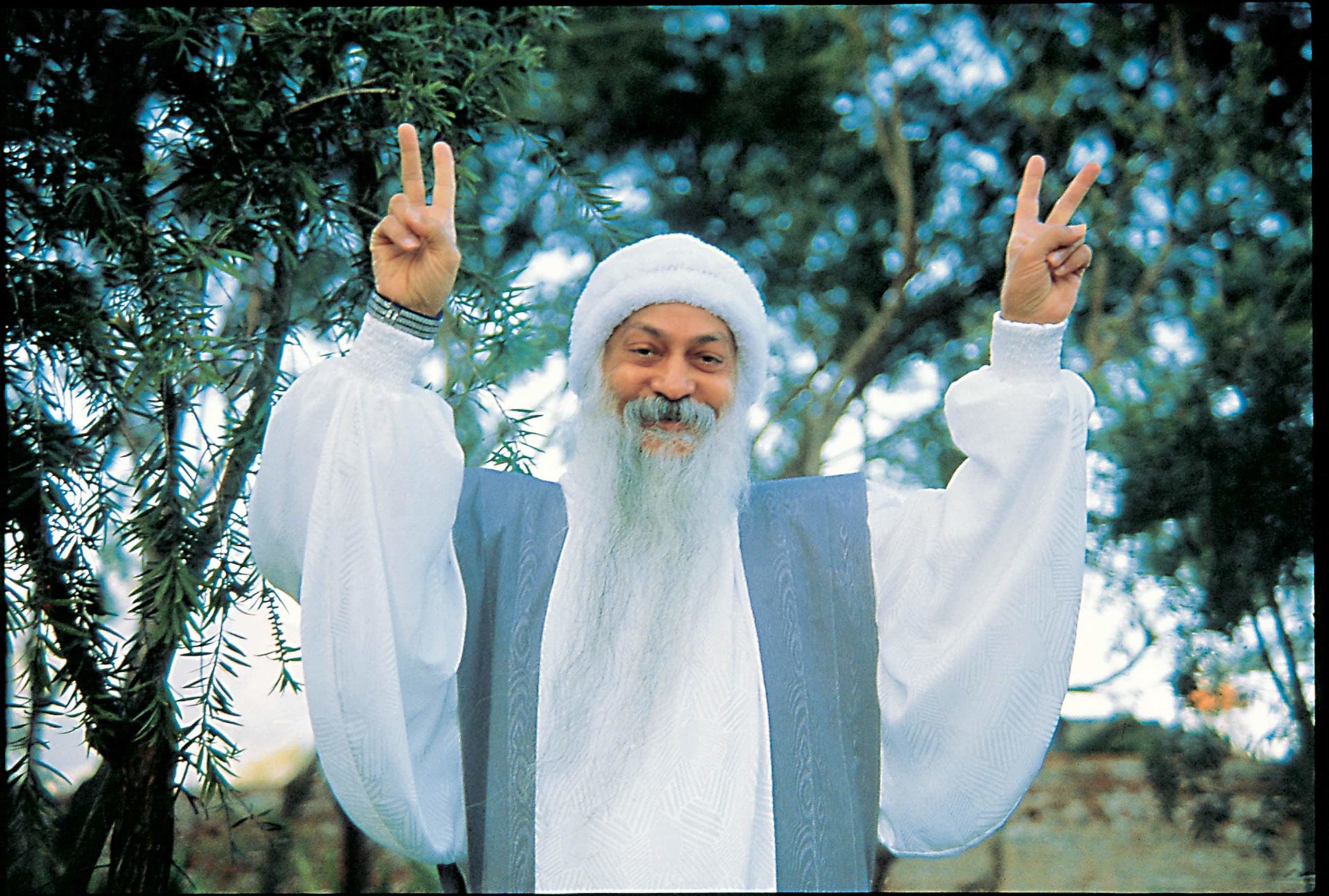Review by Kuldip Dhiman
New Man for the New Millennium by Osho
Edited and compiled by Ma Deva Sarito and Ma Kamaal Penguin Books, New Delhi. Pages 275. Rs 250.
ONLY Rajneesh “Osho” could have done it.
When invited by a well-known religious organisation to speak, Rajneesh, on the spur of the moment, decided to play a practical joke on the organisers and the audience. He began talking about a strange and highly advanced society called “Sitnalta”. The truth of the matter is that before delivering his speech, Rajneesh was reading about the mythical continent called “Atlantis”. He just reversed the order to make it “Sitlanta”!
He told the gathering that in our body we had 17 chakras, not seven as mentioned in ancient Indian scriptures. The great ancient knowledge is lost, but a secret society of enlightened masters called “Sitlanta” still exists, and this society knew all the mysteries of life.
As people listened with rapt attention, Rajneesh went on and on with all sorts of nonsense he could come up with. He was surprised at the gullibility of his listeners. But an even greater surprise was yet to come. At the end of the session, the president of the society, who was totally floored, came up to him and said, that he had heard about that society and its activities.
Then letters started pouring in, says Rajneesh, One man went so far as to say that he was a member of the “Sitlanta” society. “I can vouch that whatsoever you have said is absolutely true,” he averred.
Such are the uses of “belief”. It is very comforting, it is so reassuring, it makes us feel so secure. The more absurd the notion, the more illogical and unscientific the reasoning, the stronger is the belief. People are out there, eager to believe anything. Anything, so long as it is reassuring. If you proposed something logical, and if you could prove it scientifically, the question of believing it or not believing it would not arise, because the statement is true, irrespective of anyone’s opinion. If 2+2 make four, they will do so, whether you are a Sikh, a Hindu, a Jew, or an atheist.
All beliefs are absurd, avers Rajneesh, “man is basically coward, he does not want to enquire.” Because if you enquire, you might discover the truth, and not many of us are brave enough to face the truth. Science has shattered so many so-called religious truths, truths revealed by “God” himself to his representatives on earth, but people go on believing regardless.
How does one discover Truth? “By dropping all kinds of beliefs, — and remember I am saying all kinds of — belief in me included. Experience me, come along with me, let me share what I have seen, but don’t believe, don’t be in a hurry. . . .What I have seen cannot become your experience unless you see it.”
When it comes to the ultimate truth, then, every one of us has to discover it our own way. It cannot be discovered by following a Jesus, or a Buddha, or a Krishna.
As we enter the new millennium, all this must change. Rajneesh believed that at the turn of the millennium, a “new man” will be born. But he won’t be the ubermensche of Nietzsche or Superman of fiction, this “new man” will be totally different. “The old man was other-worldly, the old man was against this world. The old man was always looking to the heavens. The old man was more concerned with life after death than life before death.The new man’s concern will be this life, because if this life is taken care of, the other will follow of its own accord.”
The new man will not lead a life based on belief, he will simply live. Only those who simply live, without belief, come to know what truth is. Neither the believer nor the non-believer ever comes anywhere near the ultimate truth.
So far our lives have been governed by fear — even God was nothing but a creation based on fear. When it comes to realising the ultimate truth, we must remember that fear is not the key.
The new man will live life naturally. He will not be conditioned by society’s efforts at making us civilised and cultured. “Everybody is born as one single individual,” reminds Rajneesh, ” but by the time he is mature enough to participate in life he has become a crowd. If you just sit silently and listen to your mind, you will find so many voices.”
It is no exaggeration to state that most of us are mentally sick, thanks to all the conditioning we have had. We have to learn to cleanse our minds of all this conditioning. We have to break away from the past, we have to peel off the layers that cover our true self.
And this is the most difficult thing to do, because to drop the past means to destroy our so-called personality. It is a blow that our ego cannot bear. Most of us are quite happy living with our neurotic selves, even if it means eternal misery.
People have either lead life in a mathematical fashion, calculating every move, or have lived it spontaneously. Both these approaches are wrong. This dualism is the main reason for our suffering. Our effort should be to be as scientific as possible, as far as the objective world is concerned, and as artistic, as spontaneous as possible as far as the world of relationships is concerned.
Rajneesh then devotes some time and talks about freedom, creativity, love, relationships, etc. What is creativity? Here, he elaborates on the philosophy of karma yoga, without really mentioning it. Creativity has nothing to do with art, he says. Art critics have written volumes and volumes on creativity, but what is creativity after all?
The word “creativity” brings to mind all those wonderful works of art, but creativity has more to it than art. Even as mundane an activity as polishing our own shoes could be done in a creative way. “Anything could be creative — you bring that quality to the activity. Activity itself is neither creative or uncreative. You can paint in an uncreative way. You can sing in an uncreative way. You can clean the floor in a creative way. You can cook in a creative way. . . . Creativity is the quality that you bring to the activity you are doing. . . . So the first thing to be remembered is: don’t confine creativity to anything in particular.
“A man is creative — and if he is creative — whatsoever he does, even if he walks, you can see in his walking there is creativity. . . . Once you understand it — that it is you, the person, who is creative or uncreative — then the problem of finding your creativity disappears.”
How will the new man form relationships? We talk about universal brotherhood, compassion, love. But why are we, then, in conflict all the time? It is because our relationships are based on conditions. When you lay down conditions, love vanishes, and the relationship become a mere contract.
“Forget relationships and learn how to relate. Once you are in a relationship you start taking each other for granted. That’s what destroys all love affairs. The woman thinks she knows the man, the man thinks he knows the woman. Nobody knows either. It is impossible to know the other. . . . And to take the other for granted is insulting, disrespectful.”
The solution is not to get into a relationsip but to relate to the other. Relating, according to Rajneesh, is a continual exploration of the other. “Again and again, you are introducing yourself to each other. You are trying to see the many facets of the other’s personality. You are trying to penetrate deeper and deeper into his realm of inner feelings, into the deep recesses of his being.
“You are trying to unravel a mystery which cannot be unravelled.” That is the joy of love, the exploration of consciousness. By not reducing your love to a mere relationship, both parties become a mirror to the other. By exploring the other, you get deep insight into your own being. “Lovers become mirrors to each other, and then love becomes a meditation. Relationship is ugly, relating is beautiful.”
Find original page: www.tribuneindia.com








